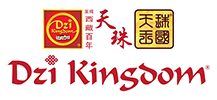1. The Ancient & Antique Dzi
The longer the Dzi exist in this world, the more potent it becomes. Many antique Dzi which is rare and unique is only available in the Dzi Kingdom as it is very hard to obtain from them from Tibet and the Silk Route.
The cosmic energy of these Dzis are strongest (its wisdom grows with time and generations) and can be as old as 1000 years of age. These gems come in different material, shapes and sizes depending on the ancient maker. The quality of these gems is very high and in the Himalaya, locals grind them into powder for medical consumption and also mixed in the paint for Thangkas and sacred statues. Some are used to adorn sacred statues and placed in the monastery for some time.
Little is known about how ancient gems are made as the tools are not as sophisticated (that’s correct! they are all handmade by Tibetans since hundred or even a thousand year ago). Even after much persuasion, they hesitantly told us that all authentic antique dzi have their eyes and motives etched in with a volcanic temperature and only the highest grade ancient jadeite gem can withstand the high heat. No chemicals or foreign elements are used to make these gems. This kind of dzi will bring you lots of blessings.
Antique or vintage dzi comes with a weathering mark or better known as a scaly surface. It will also show signs of growing line forming a second eye on the dzi if it is blessed by a guru and purified. The surface can be matt, oily or has a waxy sheen but not too glossed. The milky white design or motif on the dzi comes from internally (cannot be scraped off) and NOT like it is hand-drawn. This type of Dzi has the highest value and very precious.
The higher prized gems can come in the form of red/black brown cinnabar dot dzi. There is also the dragon vein surface, eon aged surface, and rare motif collections. At this moment, the most sought after Dzis are the Golden Eye Collection.





